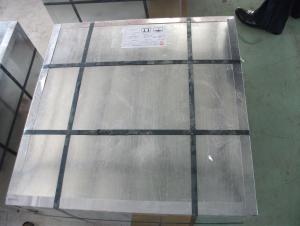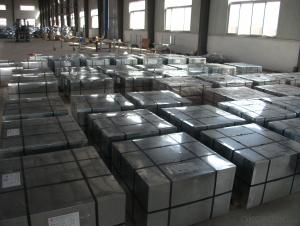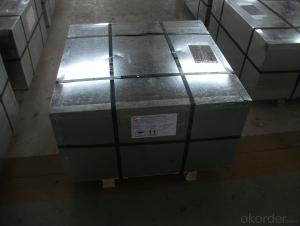TINPLATE Of Good Prime or Secondary Quality
- Loading Port:
- China Main Port
- Payment Terms:
- TT OR LC
- Min Order Qty:
- -
- Supply Capability:
- -
OKorder Service Pledge
OKorder Financial Service
You Might Also Like
Our Tinplates Specification:
Standard: ISO 11949 -1995, GB/T2520-2000,JIS G3303,ASTM A623, BS EN 10202
Material: MR,SPCC
Thickness:0.15mm - 0.50mm
Width: 600mm -1150mm
Temper: T1-T5; DR8 - DR10;
Annealing: BA & CA
Passivation:311
Oil: DOS
Surface: Finish,bright,stone,matte,silver
Packing:
1、For sheets: plastic or waterproof paper, metallic cover and angles, steel strips,wooden pallet.
2、For Coils: plastic or waterproof paper,plastic protect plate,steel strips.
Coil Inner Diameter: 508mm
Weight: 6-10 tons/coil
Application: widely used in every kinds of packing cans,such as tea packaging cans, painting packaging cans, chemical packaging cans and dry food packaging cans; and also mechanical parts
Both Prime and Second Quality Are Available!!!
- Q:How does tinplate perform in terms of printability?
- Tinplate performs exceptionally well in terms of printability. Its smooth surface allows for high-quality printing with vibrant colors and fine details, making it a popular choice for packaging and labeling applications.
- Q:What are the recycling processes for tinplate?
- The recycling processes for tinplate typically involve several steps. First, the tinplate is collected from various sources, such as households or businesses. Then, it is sorted and separated from other materials, such as paper or plastic, through manual or mechanical means. Next, the tinplate is cleaned to remove any contaminants, such as labels or food residue. After cleaning, the tinplate is shredded or melted to reduce it to smaller pieces or molten metal. The molten metal is then cast into new tinplate sheets or other products. This process helps conserve resources, reduce waste, and minimize the environmental impact of tinplate production.
- Q:What are the common widths of tinplate?
- The common widths of tinplate typically range from 600mm to 1200mm.
- Q:What are the advantages of using tinplate for jewelry?
- One advantage of using tinplate for jewelry is its affordability. Tinplate is a cost-effective material compared to precious metals such as gold or silver, making it accessible to a wider range of consumers. Additionally, tinplate is lightweight, making it comfortable to wear for extended periods. It also offers versatility in design, allowing for intricate and detailed jewelry pieces. Lastly, tinplate is highly resistant to corrosion, ensuring the longevity and durability of the jewelry.
- Q:What is tin plate?
- Tinplate is classified according to thickness and tinning. Generally speaking, in order to save costs, the current industrial production will reduce the iron thickness and tin content while guaranteeing the reliable strength of the package. One is to use less or even no tin tin (chrome iron), by 50s the development of hot dip tin plating tin to the present, China has not see the hot dip in the use of tinplate cans.
- Q:Can tinplate packaging be used for frozen or refrigerated goods?
- Yes, tinplate packaging can be used for frozen or refrigerated goods. Tinplate is a durable material that provides excellent protection against moisture and temperature changes, making it suitable for storing and transporting perishable items. It helps to maintain the freshness and quality of frozen or refrigerated goods, making it a popular choice in the food industry.
- Q:What are the common testing methods for tinplate?
- Common testing methods for tinplate include visual inspection for surface defects such as scratches or dents, measurement of thickness using a micrometer or caliper, evaluation of coating adherence through tape or cross-hatch adhesion tests, assessment of corrosion resistance via salt spray or humidity tests, and determination of mechanical properties like tensile strength or elongation through tension tests.
- Q:What is the recycling process for tinplate?
- The recycling process for tinplate involves collecting and sorting tin cans and other tinplate materials from households and businesses. These materials are then transported to a recycling facility where they are shredded and melted down to remove any impurities. The molten tin is then cooled and solidified to form new sheets of tinplate, which can be used to manufacture various products. This process helps conserve resources, reduce waste, and minimize the environmental impact of tinplate production.
- Q:Can tinplate packaging be used for toy products?
- Yes, tinplate packaging can be used for toy products. Tinplate is a durable and versatile material that can be shaped into various sizes and designs, making it suitable for packaging toys. It provides an attractive and protective packaging solution, ensuring the safety and preservation of toy products.
- Q:Can tinplate be soldered?
- Yes, tinplate can be soldered.
1. Manufacturer Overview |
|
|---|---|
| Location | |
| Year Established | |
| Annual Output Value | |
| Main Markets | |
| Company Certifications | |
2. Manufacturer Certificates |
|
|---|---|
| a) Certification Name | |
| Range | |
| Reference | |
| Validity Period | |
3. Manufacturer Capability |
|
|---|---|
| a)Trade Capacity | |
| Nearest Port | |
| Export Percentage | |
| No.of Employees in Trade Department | |
| Language Spoken: | |
| b)Factory Information | |
| Factory Size: | |
| No. of Production Lines | |
| Contract Manufacturing | |
| Product Price Range | |
Send your message to us
TINPLATE Of Good Prime or Secondary Quality
- Loading Port:
- China Main Port
- Payment Terms:
- TT OR LC
- Min Order Qty:
- -
- Supply Capability:
- -
OKorder Service Pledge
OKorder Financial Service
Similar products
New products
Hot products
Hot Searches
Related keywords




























